M A R I E K E L Z E R D E S I G N S
Creating Designs
|
The technique of surface painting onto paper with an acrylic paste mixture was given the name “paste papers” and was used in the binding of books for both cover papers and end papers during the 16th through 18th centuries. Paste papers had a resurgence in the mid 20th Century. For a look at samplings from Paste Papers I have created see Paste Paper Collection. The designs created from 2000-2009 have been compiled into 6 volumes of 50 papers each of Limited Edition Books which are for sale. To purchase go to Paste Paper Patterns BOOKS. My inspiration for the designs come from a love of repeated patterns in nature, woven materials and patchwork quilts. The dimensional layered patterns emote the feelings of tranquility and wonderment. |
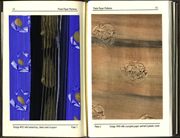
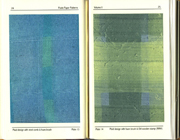
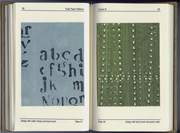
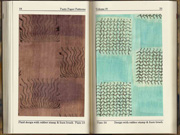
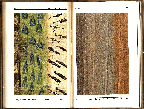
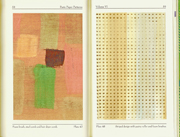
|
PASTE PAPER RECIPE This paste paper recipe is a standard recipe. Many variations can be found on the internet or in books and other publications. To create a design, you need paper, paste, paints, brushes and any number of tools, gadgets or stamps. Even though I use minimal tools the patterns that result are endless. While paste papers are generally associated with wheat, rice or flour paste I prefer methyl cellulose paste. Methyl cellulose is a synthetic-cellulose based sizing. It comes in granular form to be dissolved in cold water. It is also known as “wallpaper paste” and can be bought as such but I recommend archival methyl cellulose. The effect is a flat, monochromatic design. For a more textured design use a wheat, rice or flour paste. The following recipe utilizes methyl cellulose paste: Add 1/4 cup methyl cellulose to 6 cups cold water. Stir with a wire whisk and let stand 20 minutes. Then add 4 cups cold water and stir vigorously. Continue stirring on and off over the next few hours. Let sit overnight. The mixture should be heavy cream. When ready to use, pour methyl cellulose into a plastic cup and add acrylic paint. Approximately 2 tablespoons paint to 1 cup methyl cellulose. Not too thin and not too goopy, but thoroughly mixed. The end product can be stored for months. THE PROCESS Mix up the methyl cellulose paste as directed. Add 2 tablespoons acrylic paint to approximately 1 cup paste. Using a foam brush or sponge, pre-wet the paper with water or a base color to relax it. Spread the paste/paint mixture on the paper with a foam, soft brush or sponge. Spread additional layers over a base layer to make patterns or use your fingers, different sizes of combs, kitchen/hardware tools, stamps or a brayer with designs cut into it or string wrapped around it. Splatter on paint mixture and make pulled papers with two papers or a single paper folded over onto itself, patterned papers with a distinct repeated design or freestyle papers. If you like a pattern you have made keep a notebook of the colors used and specific tools and steps used to achieve the pattern. For design ideas, visit the library, bookstore or the internet for bookbinding, paper decorating or design topics. Dry paper on a drying rack or lay over newspaper or kraft paper spread on the floor. When dry, to flatten, place paste paper sheets between masonite boards with a weight on top. To protect the paste paper surface from abrasion spray with an acrylic spray or brush with a gloss medium.
|
© 2010-2011 Marie Kelzer. All rights reserved.
No portion of this web site and the designs and images viewed may be reproduced without written permission.